Unsure about your French table manners? Click Here to download > > How to avoid these 10 food etiquette mistakes !
- Home ›
- Destinations ›
- Southern France ›
- Ménerbes
The Unexpected Charms Of Ménerbes, France
Published 07 October 2025 by Leyla Alyanak — Parisian by birth, Lyonnaise by adoption, historian by passion
If you're planning to visit the Luberon, there's every chance Ménerbes is on your list. It has beauty, atmosphere, and plenty of history, as I discovered on three separate trips. Here's what you can see and do during your visit.
My first impression of Ménerbes was of a village rising from the vines, its pale stone glowing softly in the Provençal light.
Once in the village, perched high above the Calavon valley, you can glimpse Mont Ventoux in the distance, framed by rows of vines and olive trees.
Unlike the more polished Gordes or flamboyant Roussillon, the ancient stones of Ménerbes feel quieter, contemplative rather than showy. It's a place where you need to take a bit of time.
It wasn't always like this.
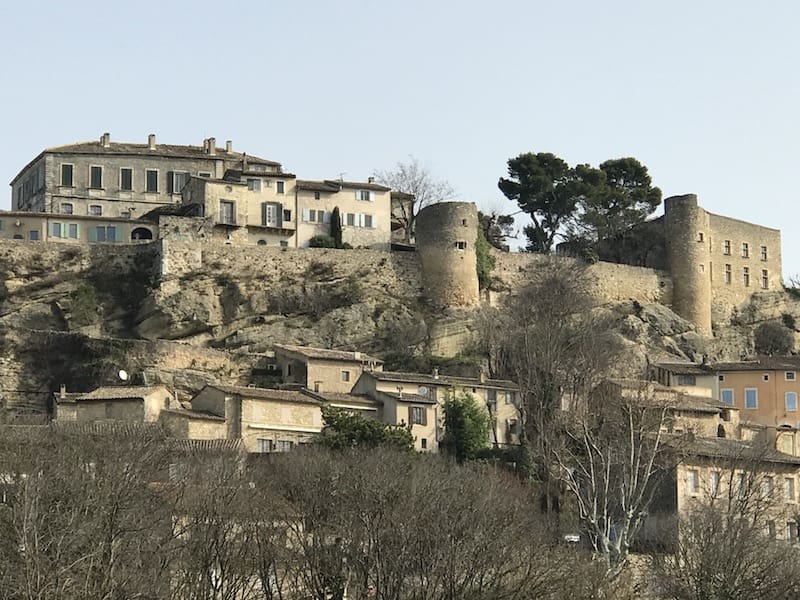 I took this photo on an earlier trip in winter a few years ago, and it's easy to understand the village's strategic defensive position when you see it perched on its ridge ©OffbeatFrance
I took this photo on an earlier trip in winter a few years ago, and it's easy to understand the village's strategic defensive position when you see it perched on its ridge ©OffbeatFranceNot too long ago, in the 1990s, Ménerbes had its moment of global fame when British author Peter Mayle documented his trials and tribulations after moving here, attracting busload after busload of tourists chasing their dreams of Provence.
Things eventually calmed down, as they do, and today's Ménerbes is serene, peppered with art galleries and a few cafés, not too many, but just enough to provide the requisite services.
It also happens to be listed as one of the five Luberon villages that qualify as "most beautiful villages in France". You'll see why when you visit.
PLANNING TO SPEND THE NIGHT?
Ménerbes has several hotels and villas, including the upmarket and gorgeous Bastide de Marie nearby. Or, you can do what I do and use nearby Bonnieux as a base. I recommend the Clos du Buis, a family-owned hotel, or if you'd rather have your own apartment, the lovely Bonheur en Bonnieux sleeps up to five.
How Ménerbes became what it is
Ménerbes has a long history, with paleolithic and Roman settlements on the ridge where the village now stands.
Roman remains have been unearthed nearby, suggesting that the site once guarded a small settlement along routes linking Cavaillon to Apt.
As you drive up, you can't help but notice its immensely strategic vantage point overlooking the valley, so much so that by the Middle Ages, a castle and its fortified settlement were firmly implanted here.
The first written records appeared in the 11th century, and by the 14th, Ménerbes had prospered as part of the Comtat Venaissin, a papal enclave surrounded by French territory. And so the village developed, with churches and chapels, and ramparts to protect them. Look around below the village and you'll see just how fertile the land is.
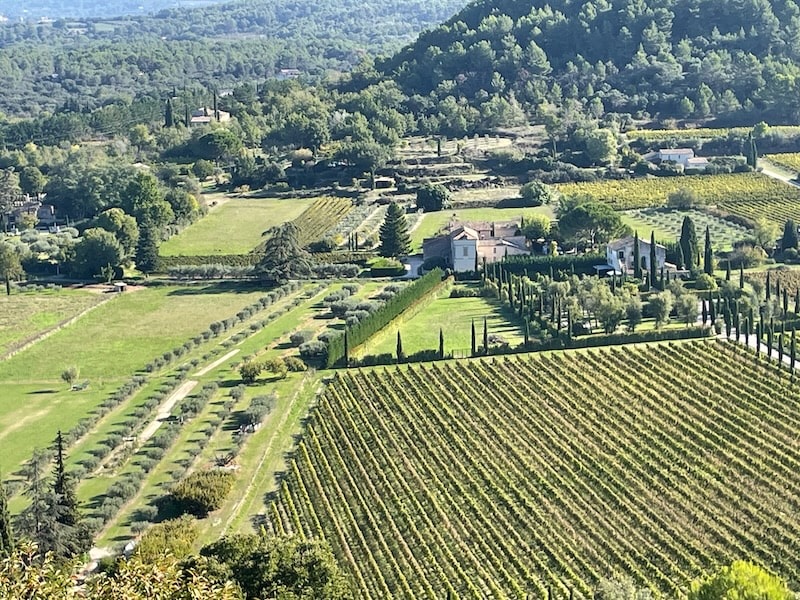
But all stories have bumps and the most dramatic in Ménerbes’ early history came during the Wars of Religion, between 1573 and 1578, when Protestant forces seized the village and held it against repeated assaults by Catholic armies.The siege lasted five years, leaving the town in ruins and its population decimated.
Slowly, it rebuilt. Ramparts were repaired and the parish reestablished. By the 17th century, Ménerbes was once again a functioning community, though it never regained the wealth it had enjoyed before the conflict.
Until the 20th century.
Ménerbes was "discovered" by artists and intellectuals, including the painter Nicolas de Staël and photographer Dora Maar (known as Picasso’s muse), attracted by its setting and atmosphere. Then it was the turn of film maker Yves Rousset-Rouart, of "Emmanuelle" fame (he later created the Citadelle and the Corkscrew Museum, which I describe below).
And then, in the 1990s came Peter Mayle, whose series of books nurtured the dreams of anyone who had ever thought of moving to Provence.
Ménerbes these days is calm, a quiet Luberon hilltop village that lies within the UNESCO-designated Luberon Regional Natural Park, recognized since 1997 for preserving both landscape and traditional culture including the vineyards, olive groves and dry-stone terraces surrounding the village.
WHO LIVES HERE NOW?
In Ménerbes and in the Luberon generally, especially its most popular corners, half or more of the houses are secondary residences, occupied only weeks a year. This means that there are two distinct seasons:
- April-October, when everything is open and often crowded
- November-March, the low season, when population drops sharply and villages feel almost empty, with many establishments closed
In Ménerbes, essential services like the bakery will stay open, as will a few local restaurants, but expect reduced hours in winter.
Things to do in Ménerbes
Like most Luberon villages, beauty comes from the stones and the buildings and the elusive "feeling", much of it the result of history and of the area's luminous light.
Ménerbes may be small, but between its fortified past and its artistic legacy, there’s plenty to fill a day.
1. Explore the cobblestone lanes
Like most villages of the Luberon, a stroll along the cobblestones on the ancient streets and through vaulted arches is the best way to soak up the atmosphere.
Ménerbes is a bit more sophisticated and restored than some of the villages, but walk away from the (tiny) main street and you'll feel its authentic pull, especially if you climb up towards the austere parish church, Saint-Luc, rebuilt after the Wars of Religion on top of a 13th-century priory that once stood here.
I have yet to see the inside, because the church has been locked each time I went by, perhaps opening for an occasional service or special event. I did look around for a caretaker or a priest but to no avail, although I do know it has several ancient frescoes and five small lateral chapels I would have loved to explore.
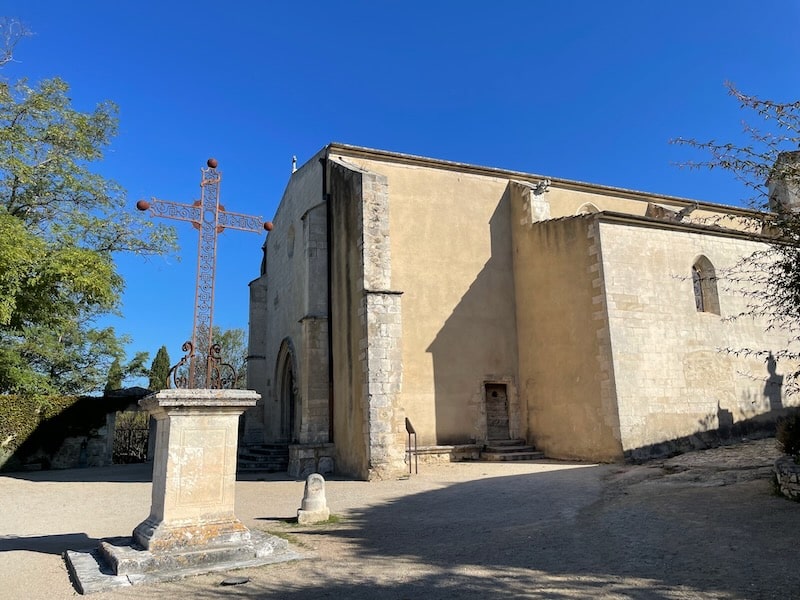 St. Luc church, at the top of Ménerbes ©OffbeatFrance
St. Luc church, at the top of Ménerbes ©OffbeatFranceOn my way back down, I walked through an arch and onto a stone path called "Chemin Rural", or rural path. I didn't think it led anywhere but took a chance and was rewarded with a short but delightful walk through the woods and back up into the village.
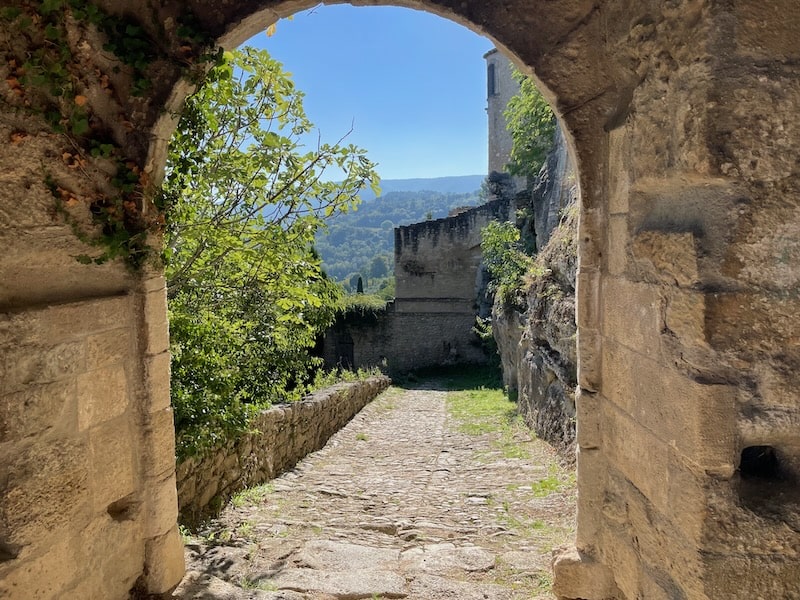 A rural path leading down from the top of Ménerbes ©OffbeatFrance
A rural path leading down from the top of Ménerbes ©OffbeatFrance2. Maison de la Truffe et du Vin
Ménerbes sits in the heart of truffle country. From December to March, local markets celebrate the prized “black diamond” of Provence, and the Maison de la Truffe et du Vin showcases this obsession.
3. The Dora Maar House
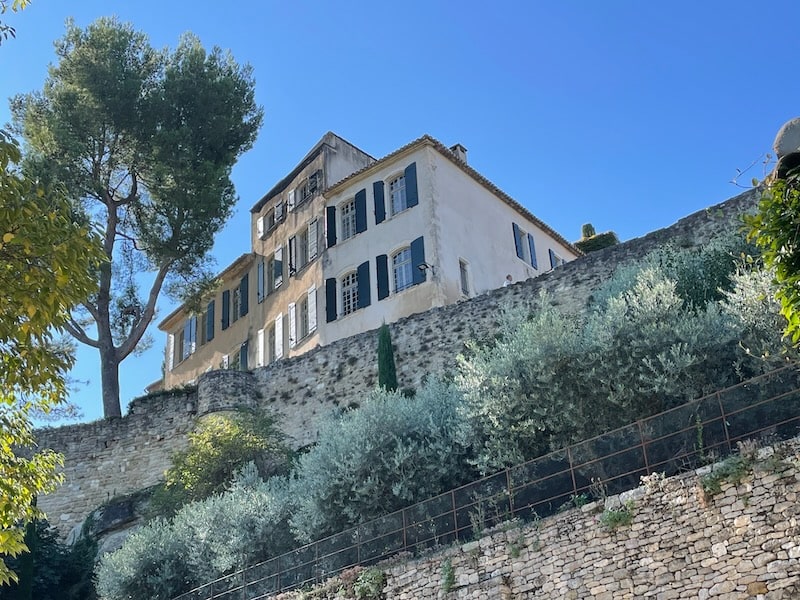 Dora Maar's house in Ménerbes, sitting on the village ridge ©OffbeatFrance
Dora Maar's house in Ménerbes, sitting on the village ridge ©OffbeatFranceIf you're not familiar with her, Dora Maar was a surrealist photographer and painter who became Picasso’s muse and partner. She photographed the creation of Guernica, Picasso's monumental painting depicting the bombing of the Basque town of Guernica during the Spanish Civil War.
Their relationship was passionate but emotionally destructive, ending badly, as did many of Picasso's relationships with women. But he did give her a painting, which she sold to buy her house.
She lived here quietly for the next half-century, painting and praying, and most of all avoiding publicity.
Most of the time, Dora Maar's house is closed to the public. It is now an artists' residence, but it does open occasionally when it hosts an exhibition.
4. Saint-Hilaire Abbey
Just down the hill from Ménerbes is a dream-like abbey founded in the 13th century, sitting in solitude on a ridge overlooking the northern slopes of the Luberon.
Saint-Hilaire is considered the first Carmelite convent built in the Comtat Venaissin (then Papal territory), established around 1254 by hermits arriving from Mount Carmel in Palestine. Built over even older hermitage caves, this Carmelite cloister and chapter house was built into the land, adapting to the land and rock formations.
The abbey has miraculously preserved the full layout of its convent buildings through eight centuries – church, cloister, refectory, dormitory, and chapter room – rare for a site of its age.
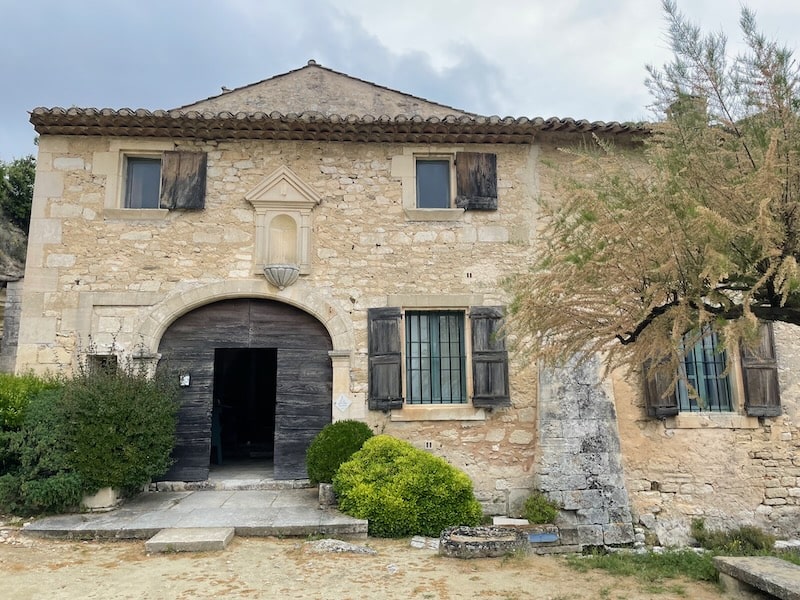 Part of the Abbey's façade ©OffbeatFrance
Part of the Abbey's façade ©OffbeatFrance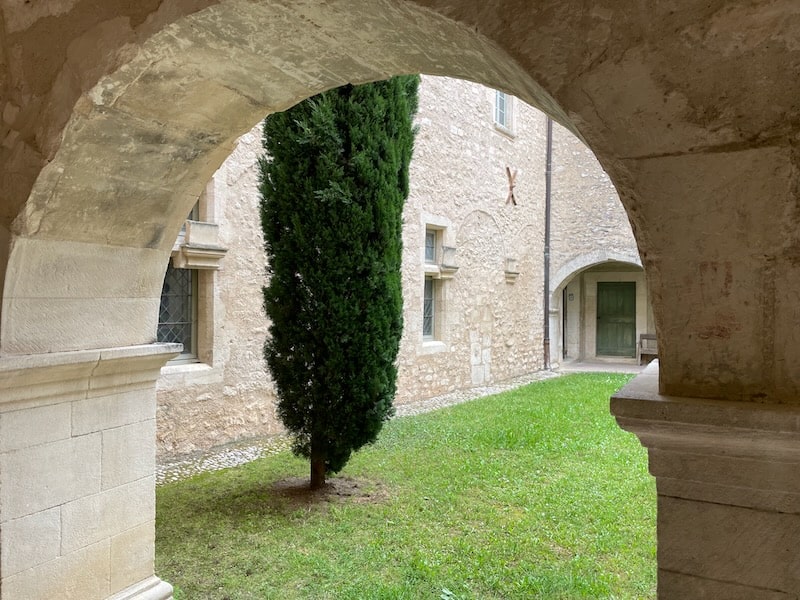 The Abbey's cloister ©OffbeatFrance
The Abbey's cloister ©OffbeatFranceWhile Saint-Hilaire is striking, there's a peace you'll feel here, perhaps because of the gardens or the terraced olive groves (restanques) that cascade down the slope, or because of the now-dry spring that once flowed from the rockface to the valley.
Look for the 15th-century fresco in a side chapel, traces of medieval paintwork, and the remnants of a spiral staircase in the bell tower.
Today the abbey still belongs to the same family that rescued it in 1961; restorations continue under official government supervision, and occasional concerts and events are held here.
5. Domaine de la Citadelle
If wine-tasting is on your menu, you'll enjoy a stop at this refurbished domain that was once a farm and how houses not only a winery, but a quirky corkscrew museum.
You can taste three wines for free, or six for a small fee, as well as stay for lunch.
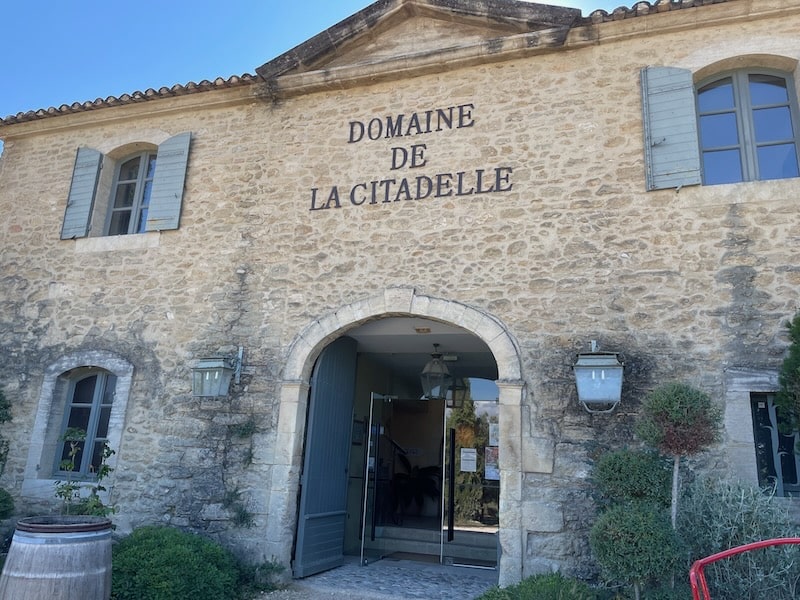
Once you've had lunch, you may want to walk it off - and this is the perfect place.
Above the domain is an intriguing herb garden, with everything from medicinal to aromatic plants, and possibly saving the best for the last: a magic herbarium, with plants once used for casting spells. Just a word of warning: it's a steep 20-minute walk to the top but... it's worth it, and think of the lunch you just ate.
Also, while there's a general overview of the garden in English, the individual plants are explained in French (along with their Latin names). But if you have your smartphone with you, you'll be able to translate these instantly.
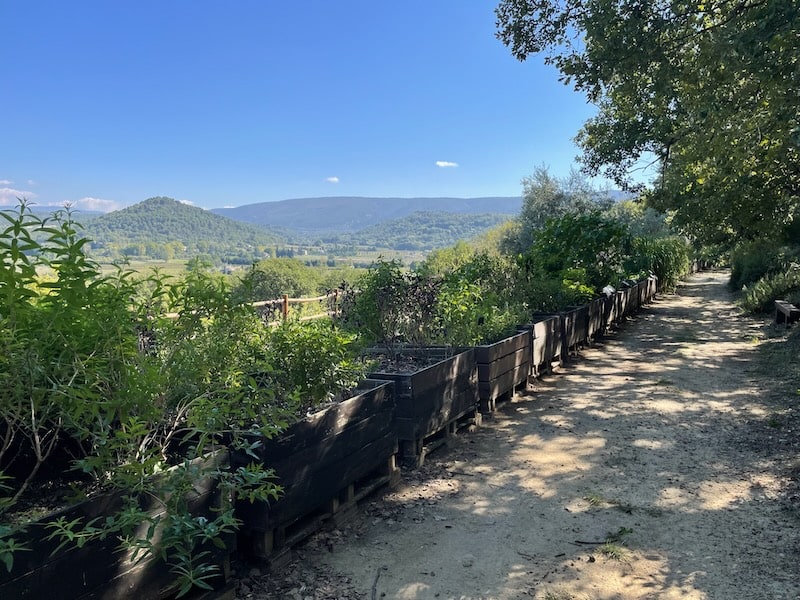 One of several levels of plants and herbs in the botanical garden ©OffbeatFrance
One of several levels of plants and herbs in the botanical garden ©OffbeatFranceThen take the time to visit the unique corkscrew museum.
Founded in 1993 by film producer Yves Rousset-Rouard (of Emmanuelle fame), it’s one of the region’s most unusual collections.
Inside, more than 1200 corkscrews from the 17th century to today trace the evolution of this humble tool. You'll instantly recognize even the oldest ones because surprisingly, little has changed.
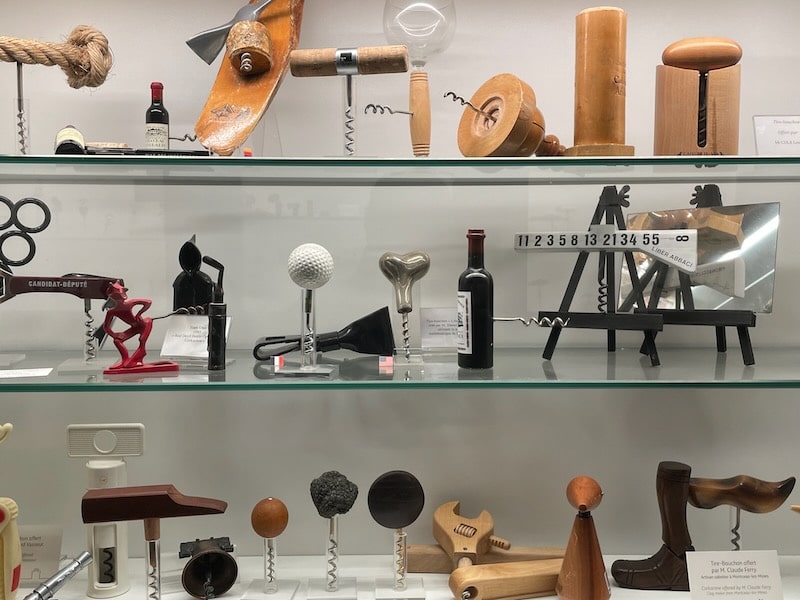 A tiny part of the Musée du Tirebouchon, the Corkscrew Museum ©OffbeatFrance
A tiny part of the Musée du Tirebouchon, the Corkscrew Museum ©OffbeatFranceSome are whimsical, others intricate, and a few... decidedly cheeky. Among the displays is a discreet section of “erotic corkscrews” tastefully tucked away, but oh so very French.
6. Olive oil museum
If wine is part of Provence's DNA, so is olive oil. Just as you taste wine, you can taste the fruits of the olive tree, and a good place to do that is at the Olive Oil Museum at La Royère.
An audioguide in English (just use your smartphone to connect) will deconstruct the oil-manufacturing process and walk you through each phase of production.
An oil tasting is a fun way to really see just how different oils can be - I tasted one with a peppery hint that I loved, but I forgot I had a cold for a moment and almost choked as it seared down my sore throat (nothing a few glasses of water didn't fix).
The museum is also a winery and has its own AOP wines, in case the Citadelle wasn't enough.
A few practical points
Getting to Ménerbes
Ménerbes is about half an hour's drive from Apt and less than an hour from Avignon. The easiest way to reach it is by car (there’s parking just below the village walls).
THINKING OF RENTING A CAR IN FRANCE?
Don't wait until the last minute, especially if you want one of the scarcer automatics.
🚗 Check availability at Discover Cars (it's what I use to compare prices).
Eating in Ménerbes
The village has a number of eateries for all budgets.
- I like the food and the setting at the Café du Progrès, for the view but also because it's part tobacconist and part eatery – very French.
- If you're headed in that direction, try the two restaurants at La Citadelle, Tayac and the Bistrot (but make sure you reserve first)
- If you want something light, the salads at L'Escandihado are good (and they have pizzas, for a change)
- The Maison de la Truffe et du Vin is more tasting room than restaurant, but you can order light dishes on its terrace with panoramic valley views.
There are plenty of others I haven't tried but the quality of food here so far has been above average. If you're visiting off-season, please call ahead because some restaurants close for the winter.
Artists and artisans
The main street has a number of small galleries and workshops, in keeping with the village's artistic past. You'll find painters and potters and photographers, so don't hesitate to drop in and admire their work.
There's also a weekly market on Thursday mornings (in season) that brings together local producers from the Luberon; you'll find olives, goat cheese, honey, and other local products.
FAQ
What is Ménerbes famous for?
What is Ménerbes famous for?
Ménerbes is best known for the five-year siege during the Wars of Religion in the 16th century, and in modern times for inspiring writers and artists, notably Dora Maar and Peter Mayle.
Can you visit the Dora Maar House in Ménerbes?
Can you visit the Dora Maar House in Ménerbes?
The house is not a museum but now serves as an artists’ residency. It occasionally hosts exhibitions, but most visitors simply view it from the outside.
What is the Maison de la Truffe et du Vin?
What is the Maison de la Truffe et du Vin?
It is a cultural and tasting center dedicated to local wines and truffles. Visitors can learn about Provençal gastronomy, enjoy tastings, and buy regional products.
How long should you spend in Ménerbes?
How long should you spend in Ménerbes?
Two to three hours is usually enough to explore the lanes, enjoy the views, and stop at the Maison de la Truffe et du Vin but if you add in some of the surrounding attractions, you can stretch your visit to a full day.
Is Ménerbes a good base in the Luberon?
Is Ménerbes a good base in the Luberon?
Ménerbes can be a pleasant base if you have a car and would rather stay in a private property than in a hotel (there are few). However, public transport connections are very limited, and villages like Bonnieux, Gordes, or Lourmarin generally offer more options for amenities and access.
Before you go...
If you’re exploring Provence, you might also enjoy nearby Lacoste, Bonnieux and Roussillon, each with its own distinct rhythm.
As for Ménerbes, it rewards those of us with time on our hands. It's a place to linger at a café table and wander the lanes once most visitors have left, allowing the village to reveal itself slowly as the light slowly vanishes.
Did you enjoy this article? I'd love if you shared it!

